If you have a well-established strawberry bed, you can grow all your future strawberries and beds for free!

With a little forethought and planning, you can keep the same strawberry plants going, almost endlessly.
Jump to:
How is it possible to grow strawberries from the same plants indefinitely?
This is a reasonable question because strawberry beds do slow down and eventually reduce their berry production. As the bed ages, the berries will become smaller and fewer.
The soil, which is somewhat difficult to amend with perennial strawberries, will become depleted over time. While you can top dress and fertilize, you can’t renew the soil significantly without tearing up the whole patch and starting over.
As the plants age and the soil becomes depleted, the yield and quality will go down.
This is why we plan to replace our strawberry beds every three to five years. For a continuous supply of strawberries, you’ll want to start the new bed in a new location or extend rows next to your existing bed. You’ll want to do this in the final year of the current bed so that you don’t miss a year of picking in the establishment year.
If strawberry beds die out, how can the same plants give you future free strawberries?
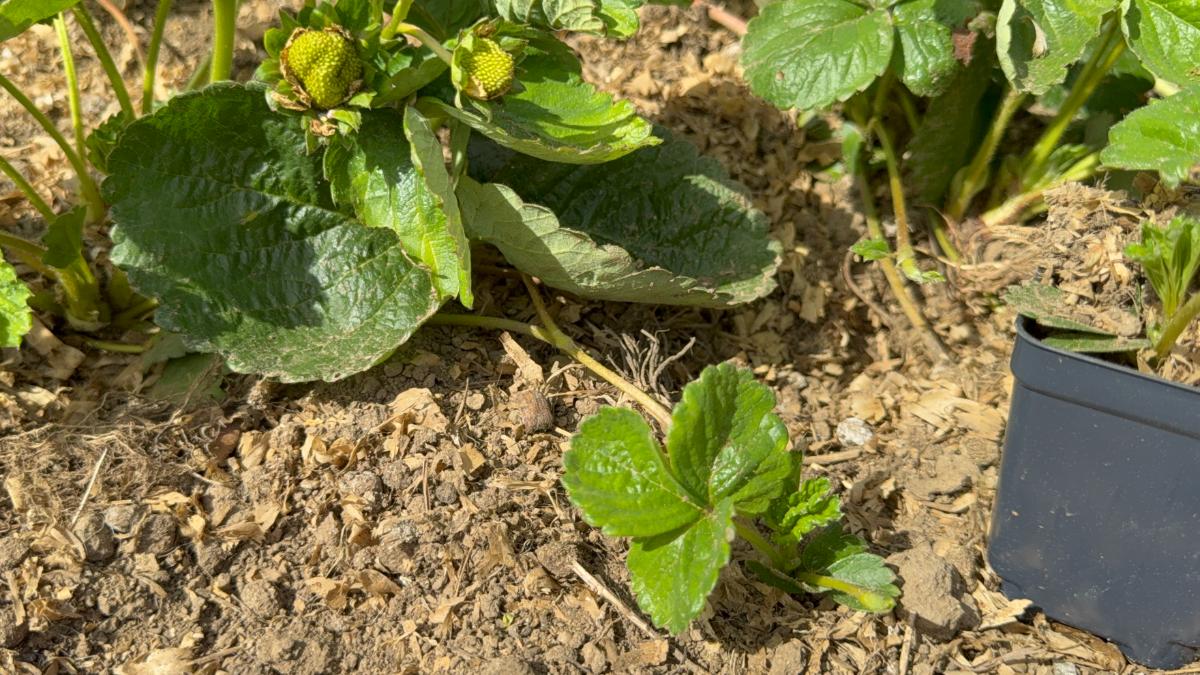
The key to free strawberries for life is utilizing the runners. From the runners, you can propagate all your future strawberry plants. But this will require that you think ahead a bit. Plan for propagation the year before you want to harvest from the new berry bed.
Strawberry plants naturally propagate from runners, which grow small plantlets at the end of the runners. When these plantlets come into contact with soil and moisture, they root. Eventually, the runner itself (which is called a stolon) will die back and the plantlet will become an independent plant.
We can manipulate this natural propagation and take advantage of it to harvest new transplants for our next strawberry bed.
Runner management for bigger, better, healthier strawberry beds
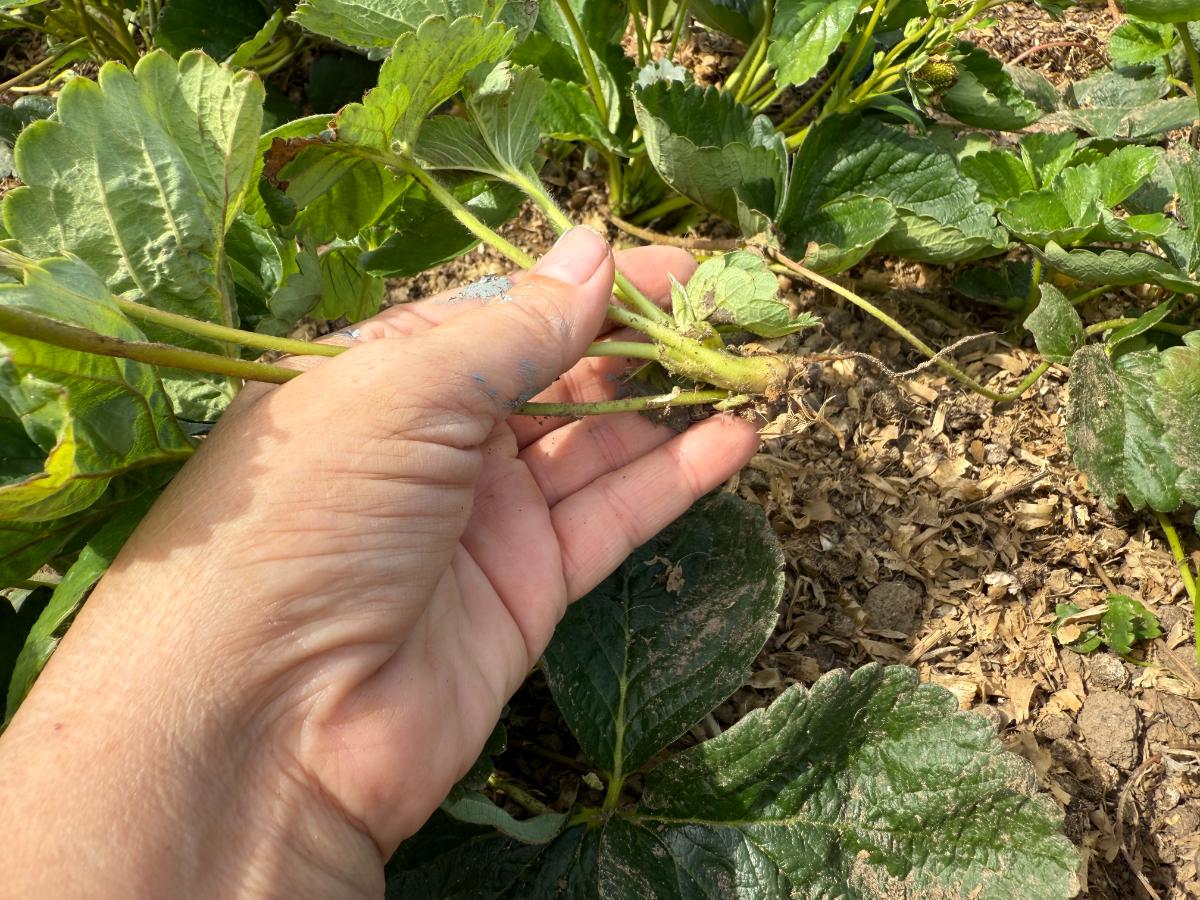
While it might seem like this method is weakening your current strawberry patch, in fact, the opposite is true.
Leaving too many runners to root into new plants in your existing strawberry bed causes problems.
- The runners become a drain on the parent plant
- Runners and plantlets draw nutrients and water from the parent plant
- Runner production reduces flowering, berry development, strawberry size, and yield
- Strawberry beds become overcrowded when too many runners are allowed to root
- Overcrowding is a draw on soil moisture and resources
- Overcrowding also blocks good airflow
- Blocked airflow results in mildew, mold, and fungal diseases, weakening or killing your strawberry plants
In a well-managed strawberry bed, only four runners per plant will be allowed to develop and expand the bed for June-bearing plants. After that, any new runners should be cut off so that the bed does not become overcrowded and the parent plants aren’t taxed into death or poor production.
The runners should be removed from all everbearing varieties.
Can’t you propagate strawberry plants from the seeds?
Technically, yes, strawberry plants can be propagated from the seeds of the strawberries that you grow, but practically speaking, it’s hardly ever done — for good reason.
The large, juicy strawberries we have become accustomed to are the result of careful breeding, selection, and hybridization. Two or more good, promising strawberry varieties may have gone into developing your strawberry plants.
When you save seeds and grow new plants from them (which in itself has questionable germination and growth), you will not get the same plants as the parent plants you started with. Hybrid plants will revert back and offer only random and questionable results in the offspring.
Most likely, you will lose size, health, production, and yield. It is unlikely that the berries that grow from plants grown from seed will give you the same berries as the parent plants did.
What’s more, there is no way of knowing what other strawberry plant might have cross-pollinated with the strawberries in your beds. It could be your strawberries pollinating each other; it could be different varieties that you grow; it could be wild strawberries pollinating yours; it could even be pollen from your neighbor’s plants.
When it comes to growing strawberries from seed, there’s just no telling what genetic material you might end up with.
Runners produce identical genetic clones of the parent strawberry plant

Runners and the plantlets that grow from them are genetic clones of the parent plant. They will produce the same type, size, and flavor of berry as what you’re already harvesting.
They will also produce the same type of plant. In other words, if the plant is June-bearing, the daughters will be June-bearing. If everbearing or day neutral, that is what the offspring will be.
This means that propagated runner plants will be much more reliable.
Plants propagated from runners will also be more reliable in terms of growth and development.
How to Grow New Strawberry Transplants from Strawberry Runners (aka Stolons)
Runners first grow as long stem-type shoots, and then leaves develop and the new growth becomes a smaller version of the parent strawberry plant.
At first, the plantlets will not have roots. They will look like a leafy, rootless plant on the end of a long stem that runs along the ground.
The weight of the small plant will drop the stem to the ground, and after several days of being in contact with soil and moisture, roots will begin to grow.
There are two options for rooting strawberry plants for transplanting to grow a new bed.
Rooting in the strawberry bed:
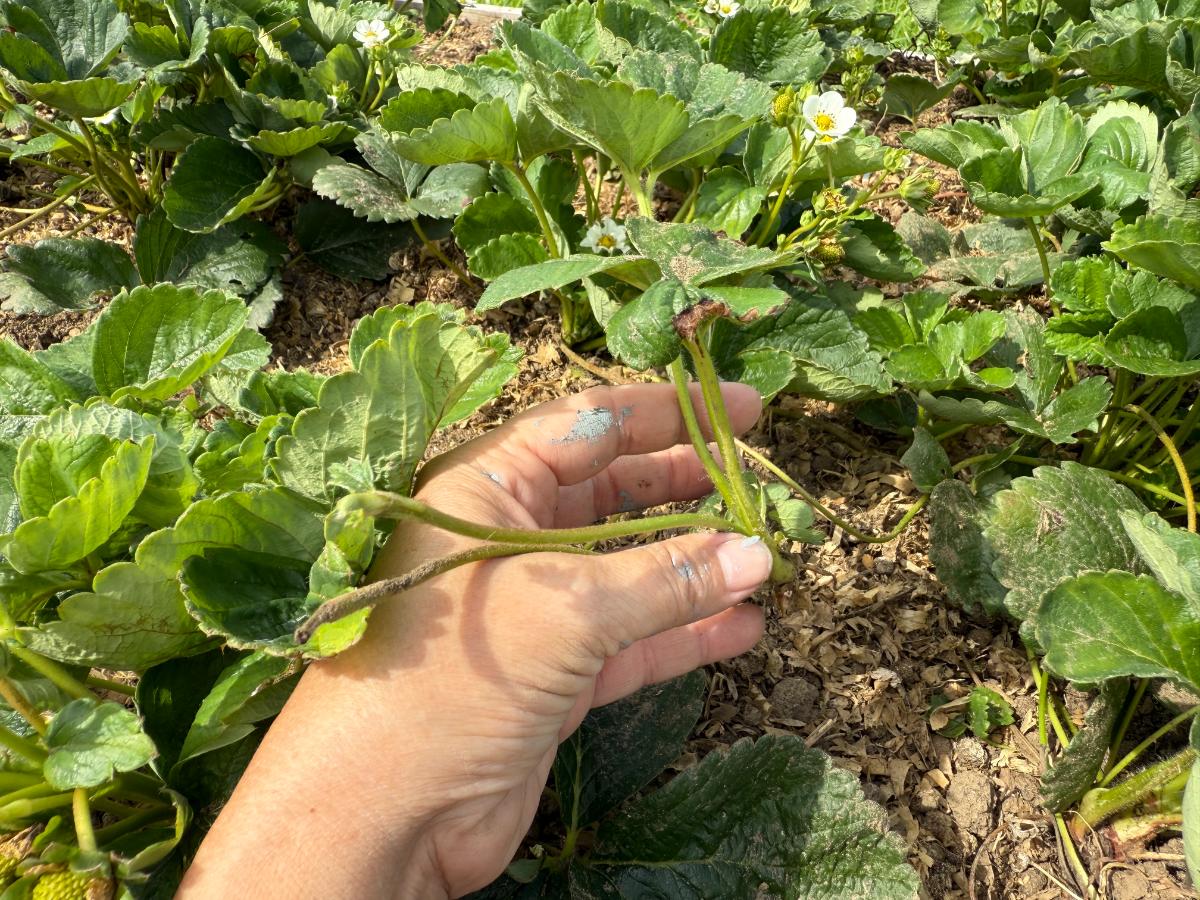
The first option is to just let the runner plants root in the soil, and then dig them up to transplant them.
- Ideally, direct the runners to a more open spot of soil as they grow
- Use a bent piece of wire or a landscape staple to hold the runner stem down to the ground and keep the plantlet in place while it roots
- The placement should be one where the transplant will be able to be dug up without causing damage to surrounding plants
- The staple will ensure good contact with the soil surface
- You do not need to dig a hole — strawberries root from the surface down; they just need contact with the soil and water to stimulate root growth and grow independently
- Keep the soil moist
- After a week or so, the runner plant will grow roots into the ground
- If you can tug on the plant and it resists you, it has roots
- The runner may die off on its own, but if the plantlet is rooted and the runner has not died back, go ahead and clip it between the plantlet and the parent plant
- Let the new strawberry plant root for another one to two weeks, and then dig it up with a trowel
- Dig a little wide and deep enough to get under the root ball without cutting into the roots
- Now, you can move the new plants to the new bed, or you can pot them up in grow packs or pots
- Keep the transplants well watered until established
This method can save you on materials like pots and potting soil, but it does require handling the transplants at least one extra time.
Rooting into transplant pots:
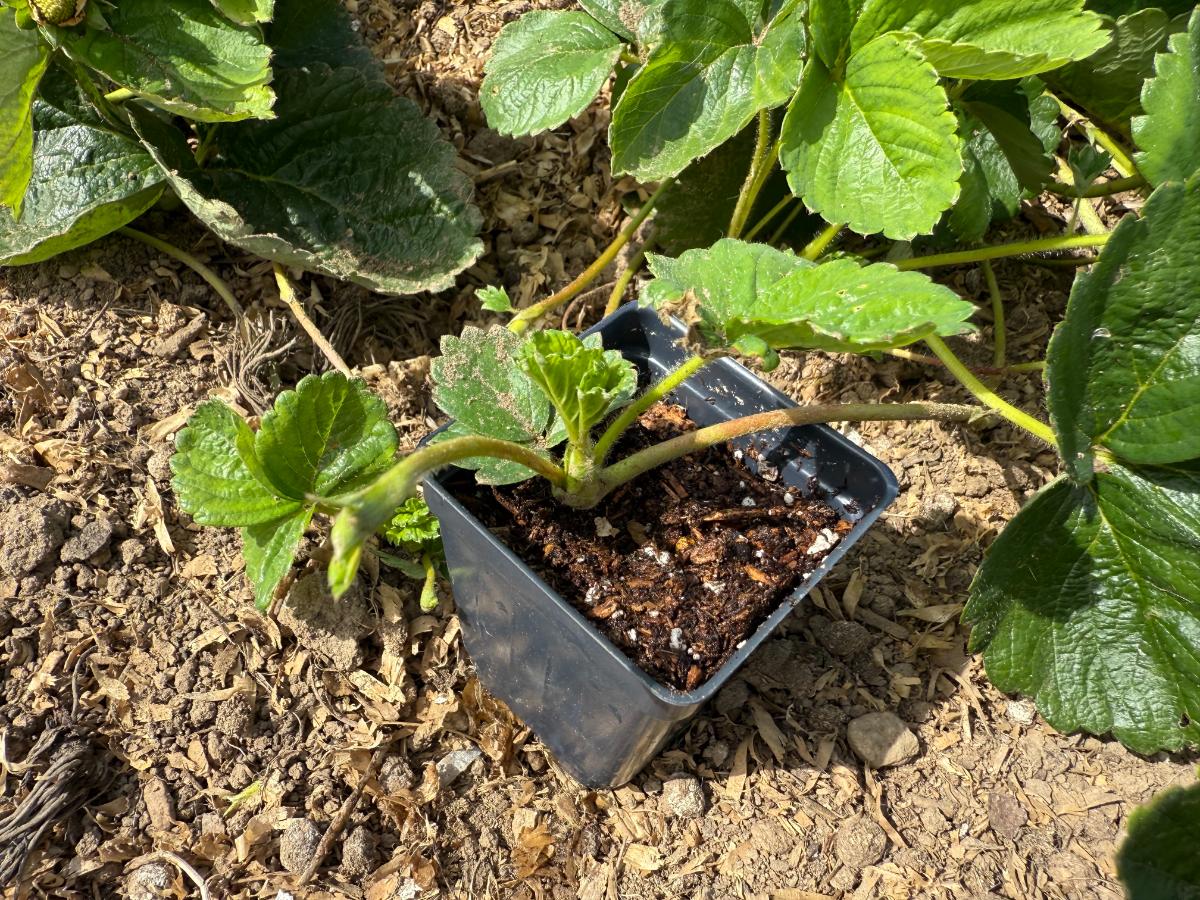
You can use a similar method to root the plantlets directly into pots or cell packs.
This option will allow you to gather transplants even if you’re not ready to plant them in the ground.
It also makes for a more portable set of plants that can be moved and handled more easily. It requires no digging of the plant, and so it sets the plant up a little better. There is less disturbance and less risk of serious transplant shock with this method.
This method allows the plants to root even further before transplanting, too, and can result in larger transplants.

- Prepare single pots or cell packs with potting soil (cell packs are cheaper and more compact, but single pots are more flexible in terms of placement or arrangement in the strawberry patch)
- Moisten the soil
- Set the pot or cell pack near the end of the runner (or cluster of runners)
- Direct each plantlet to a single pot or single cell
- Use a landscape staple or bent wire or paperclip to hold the runner plant in place, in contact with the soil (or toss a little loose soil over the runner to weight it down)
- Leave the pot or cell pack sitting in the strawberry patch until the runner plants root
- Check daily, as these pots will dry out quickly and may require daily watering
- It is important to keep the soil moist so that roots can grow and so the plants and roots don’t dry out
- When the plants are well rooted (the plants don’t pull out when you tug on them), you can clip any remaining runners and take the pots out of the strawberry patch
- They can now be left to grow on further or transplanted into new strawberry beds
The benefit of this method is that most of the work is done for you. You can simply flip and transplant the potted strawberry plants when the time comes.
Timing for Rooting and Propagation and Planting the Next Strawberry Patch
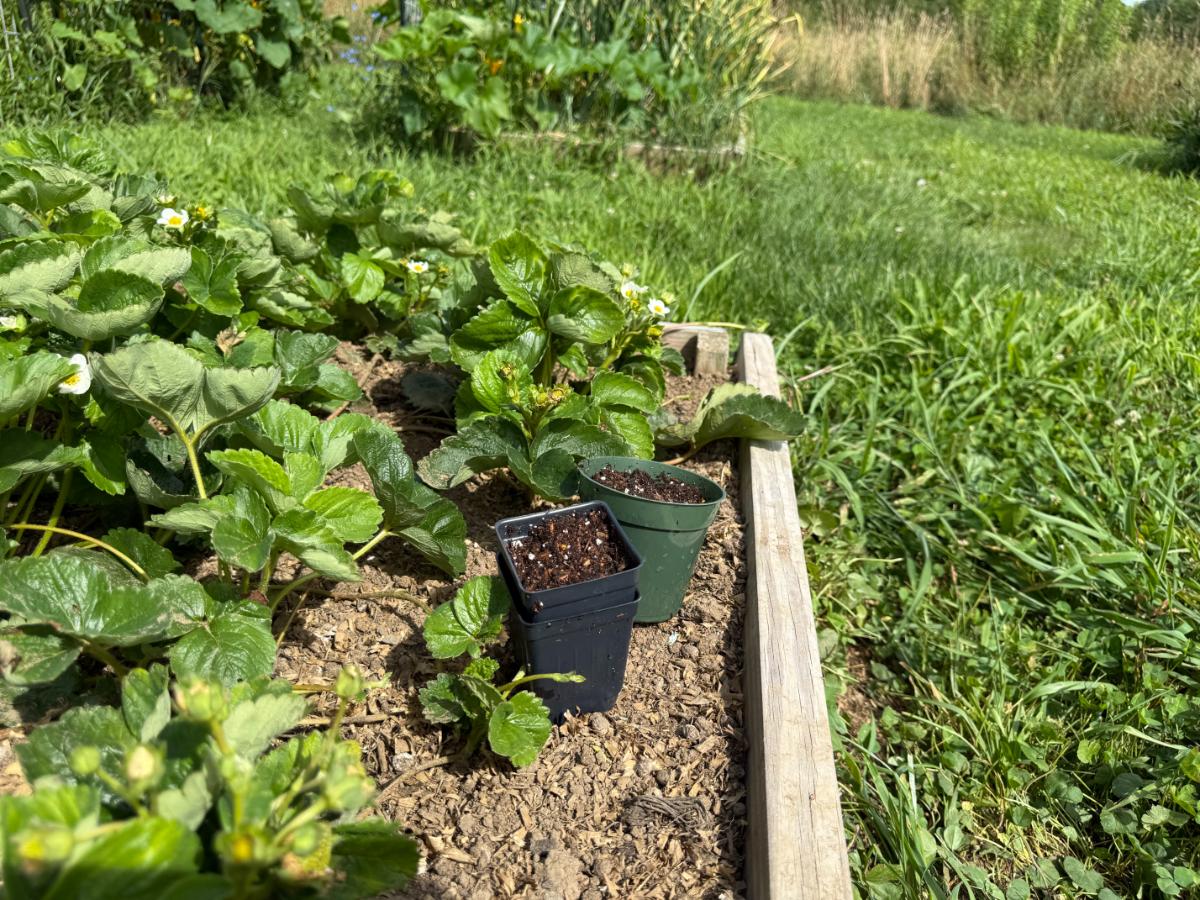
There is some flexibility in the timing of when you need to root and plant your new plants.
The earlier you root what you need for your new bed, the better. This gives you time enough to root and gather enough runner plants to set up your new bed. And time before winter for the plants to get as strong as possible.
Plant the new bed in the season before you expect the old one to be retired and reclaimed. That way, the new plants will be ready to produce next year with no loss of harvest.
If any flowers form on the new transplants, pinch them off so the plants will develop and focus on root growth.
Transplants should have at least six weeks to root before frost and freezes send them into winter dormancy.
Be sure to mulch the new plants to keep the young roots protected over the winter. Once the ground freezes, provide an extra layer of three inches of straw mulch to the new plants (pull this back when spring comes).
If you do this every few years, as your bed needs replacing, you will always be in beautiful berries. And you’ll never have to buy strawberry plants again!


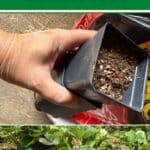


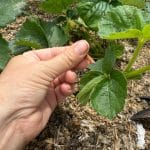

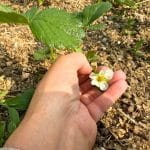

Leave a Reply